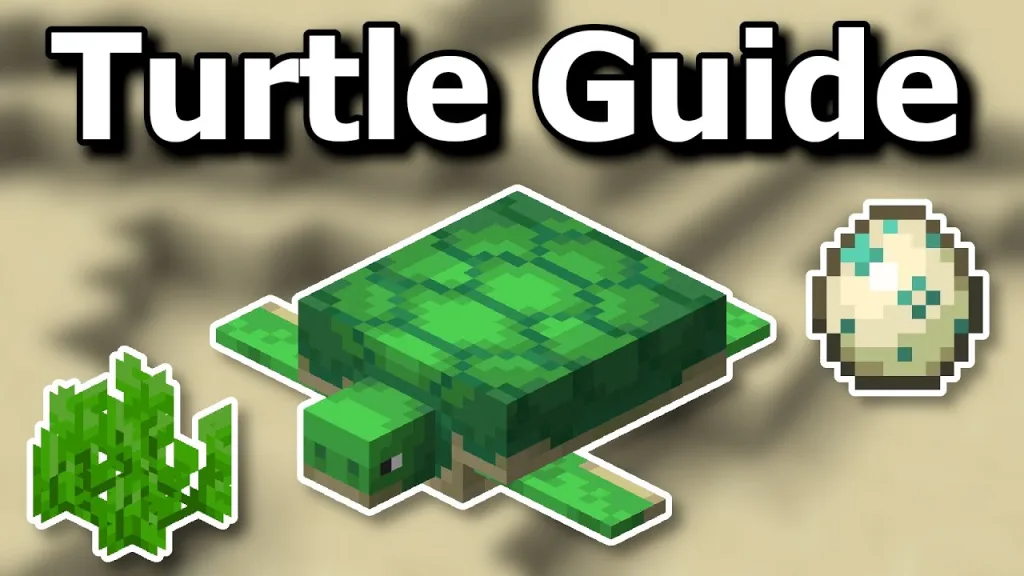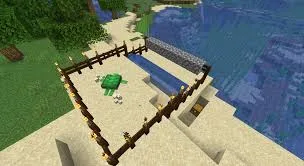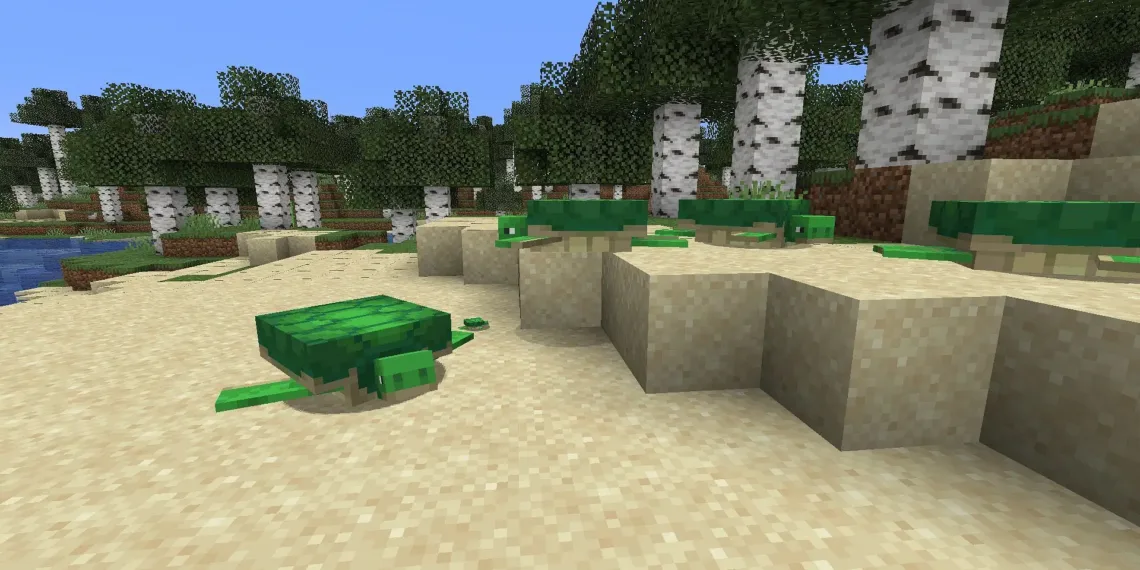Turtle eggs are one of Minecraft‘s most fascinating and valuable breeding mechanics, offering players access to precious scutes and unique underwater equipment. Whether you’re building an underwater base or crafting powerful potions, understanding how to obtain, hatch, and protect turtle eggs is essential for any serious Minecraft player.
Table of Contents
How to Obtain Minecraft Turtle Eggs
Breeding Requirements
Feed two adult turtles seagrass to initiate breeding. One turtle becomes pregnant, visibly larger, and returns to her home beach to lay eggs. Here’s what you need:
- 2 Adult Turtles: Found on beach biomes
- Seagrass: Harvested underwater using shears
- Beach Location: Turtles only lay eggs on their home beach

Egg Laying Process
A pregnant turtle lays 1-4 eggs on sand, red sand, or suspicious sand. The pregnant turtle will travel back to her original spawning beach, so patience is key during this process.
Turtle Egg Hatching Guide
Placement Requirements
Up to 4 turtle eggs can be placed in one block and slowly hatch into turtles. Though turtle eggs can be placed on any block, they only hatch on sand blocks. Specifically, eggs hatch on:
- Sand blocks
- Red sand blocks
- Suspicious sand blocks
- Above or below water (doesn’t matter for hatching)
Hatching Timeline & Process
| Stage | Duration | Visual Indicator |
|---|---|---|
| Egg Stage 1 | 1-2 in-game days | Smooth egg appearance |
| Egg Stage 2 | 1-2 in-game days | Small cracks appear |
| Egg Stage 3 | 1-2 in-game days | More visible cracks |
| Hatching | About 4-5 in-game days total | Baby turtle emerges |
The Eggs take some time to hatch. Typically it takes about 5 in-game days for the Eggs to hatch and they grow faster during the night.

Protecting Turtle Eggs
Major Threats
These eggs are fragile; mobs like zombies and other hostile creatures will trample them. Eggs can be broken without tools and can also be trampled by living entities falling or walking on them.
Protection Strategies
To protect the eggs from being trampled by mobs or other players, consider fencing off the area around the eggs. Also, to prevent hostile mobs from spawning and attacking the eggs at night, place torches or other light sources.
Best Protection Methods:
- Fencing: Build barriers around egg clusters
- Lighting: Place torches to prevent mob spawning
- Silk Touch: Use silk touch tools to safely relocate eggs
- Player Awareness: Avoid jumping or walking on egg areas
Uses for Turtle Eggs & Scutes
Scute Collection
Baby turtles drop a single turtle scute when they grow up into adults, which is the only way possible to obtain the item. Eggs take another in-game day to grow into adults after hatching.
Turtle Shell Crafting
Players have to collect five of these turtle scutes to create a turtle helmet, which will be the main ingredient for a potion of turtle master.
Turtle Shell Benefits:
- Water Breathing: Grants the Water Breathing status effect for 10 seconds
- Durability: Has greater durability than an iron helmet
- Enchantments: Can be enchanted with Respiration for an additional 15 seconds underwater
Potion of the Turtle Master
When this potion is drank, it will give you Slowness IV and Resistance III status effects (slowing your speed by 60%) for 20 seconds. This creates a powerful defensive potion that protects you from up to 80% damage.
Related Minecraft Content
Master more Minecraft mechanics with our comprehensive Minecraft breeding guide and underwater exploration tips.
For advanced players, check out our Minecraft potion brewing guide and farming automation tutorials.
Stay updated with the latest Minecraft updates on our gaming news section.
Turtle Farming Tips
Optimization Strategies
- Beach Setup: Create dedicated turtle breeding areas on beaches
- Seagrass Farming: Establish underwater seagrass farms for sustainable breeding
- Automation: You can increase the random tick speed to accelerate hatching (creative/admin only)
Trading Opportunities
Expert-level cleric and leatherworker villagers buy scutes for emeralds. This makes turtle farming economically viable for trading systems.
Common Mistakes to Avoid
Wrong Block Types: Remember that eggs only hatch on sand variants, not regular blocks like stone or dirt.
Trampling: Be extremely careful around egg areas – even accidental stepping can destroy hours of breeding work.
Mob Protection: Always light up egg areas to prevent hostile mob interference during the lengthy hatching process.
Conclusion
Turtle eggs represent one of Minecraft’s most rewarding long-term projects, offering access to unique underwater equipment and powerful potions. With proper protection, patience, and breeding techniques, you can establish a sustainable turtle farm that provides valuable scutes for crafting and trading.
Remember to protect your eggs, be patient during the hatching process, and always breed on the turtle’s home beach for optimal results. Happy turtle farming!
For the latest Minecraft updates and official information, visit the Minecraft Wiki and official Minecraft website.
Frequently Asked Questions
Q: Can turtle eggs hatch on any type of sand block?
A: Turtle eggs can be placed on any block in clusters of up to 4; however, they only hatch on sand, red sand, or suspicious sand, above or below water. Regular sand, red sand, and suspicious sand all work for hatching.
Q: How long does it take for baby turtles to grow into adults and drop scutes?
A: Eggs take about four to five in-game days to hatch into baby turtles, which then take another in-game day to grow into adults. You can speed up baby turtle growth by feeding them seagrass.








